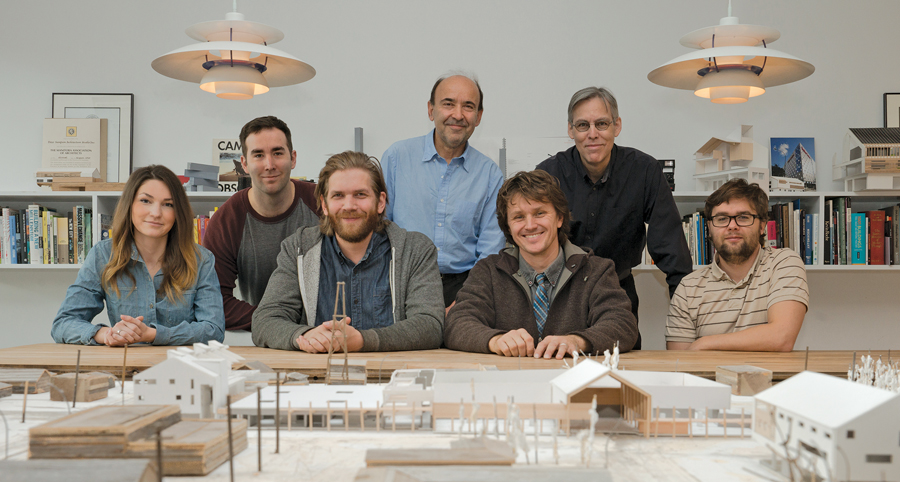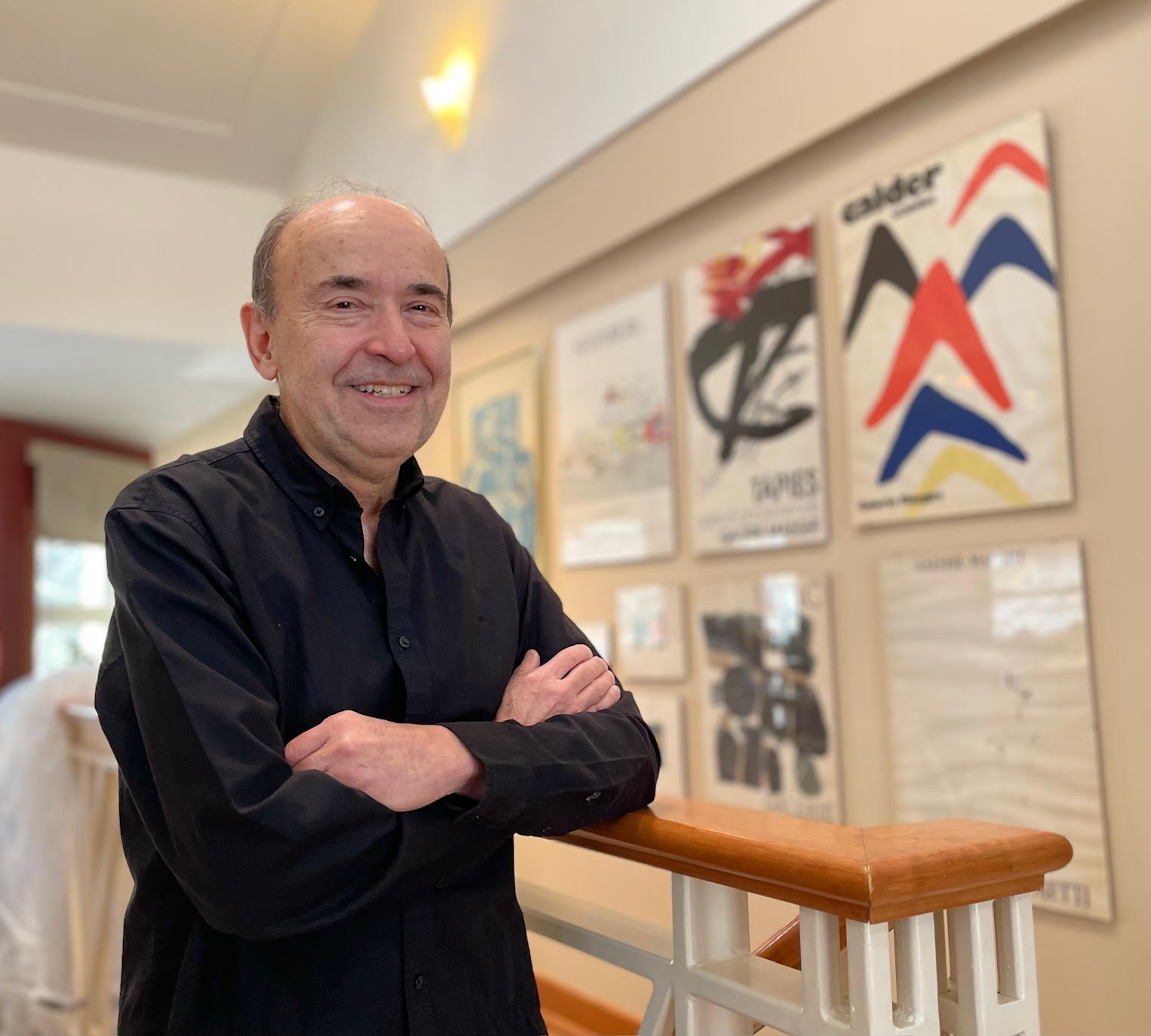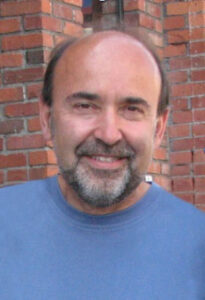Notable Winnipeggers by Myron Love
Ed Calnitsky and I have been friends since high school. In fact, my first trip overseas was with Ed and a mutual friend, Greg. While I spent our month in London wandering around that great city, Ed promptly found work with a London architectural firm and stayed for three months.
Over the years, I have done several interviews with Ed, most of them for articles I wrote for a construction magazine out of Vancouver detailing some of the projects the busy architect has been involved with across Canada. So, it was nice catching up with him again recently over lunch on Corydon and continuing to chart his career as an architect.
Ed comes from humble beginnings. The oldest of four siblings, he was six when his father passed away. He learned resiliency and the value of hard work from his widowed young mother. I remember how he put himself through university working at lumber yards and factories in the summers.
Ed has been an architect for more than 30 years – but he started his post-university working life as an interior designer. “From an early age, I was always interested in drawing,” he recalls. “While I initially considered going into architecture, I felt at the time that it would be too daunting.”
After his time in London, he traveled to Israel and spent some months volunteering on a kibbutz. On the kibbutz, he became friends with another volunteer from Caracas, Venezuela. That fellow had an uncle who was an architect in the Venezuelan capital at one of the country’s leading architectural firms. Ed spent the next summer working for the firm.
“Working for architectural firms in both London and Caracas gave me the opportunity to become involved in a number of interesting projects,” he recalls.
Back in Canada, he was hired to teach design at Fanshawe College in London, Ontario. After three years, he moved back to Winnipeg where he met Linda, his wife-to-be, and decided to go back to university and earn his degree in architecture.
Ever the hard-worker, Ed went to school part time while working for the provincial government Design Services Branch. After graduating from architecture, he worked for a period in the Health Sciences Centre’s planning department, then interned with James + Rollier Architect Planner in Winnipeg.
In 1982, he and a partner, Ken Heshka, opened their own firm Calnitsky Heshka Associates. He went solo in 1986, forming Calnitsky Associates Architects.
“In our practice,” he says, “we are typically involved in a wide range of institutional and commercial projects. The management of these projects is challenging as every project is a team effort and can often be very complex requiring highly specialized skills from professional staff and associates.”
Ed has enjoyed a much-varied career that has taken him far and wide. His projects have included hotels and hospitality projects, secure facilities including prisons, churches and schools, health care centres, aquatic and sports facilities and many others across Canada and in the United States.
His first big break came early in his career when he was hired by Lakeview Developments to design a chain of hotels after impressing then Lakeview President Jack Levit with work he did on a smaller project for the company. This led to steady work designing hotels with other developers across Canada and in the United States.
“Our most recent hotel designs have been the new Best Western Premier Hotel on Regent Avenue in Winnipeg,” he notes, “and two major hotels in Saskatoon, the Downtown Holiday Inn and the new College Quarter Hotel built on the campus of the University of Saskatchewan – one of the first hotels in Canada to be built on a university campus.”
Among Ed’s more prestigious projects have been the New Gillam Town Centre with PSA Studio Inc., receiving a Canadian Architect Award in 2013; the Manitoba Law Courts Building renovation involving the restoration of all courtrooms and judge’s chambers as part of a team led by Hans Peter Langes, Architect; and a major retrofit and upgrade to Assiniboine Park Pavilion in Winnipeg.
Then there was Ed’s design of the Canadian Embassy Reconfiguration in Kyiv, Ukraine, and the Canadian High Commissioner’s Residence and CIDA Offices in Bridgetown, Barbados.

Current projects he is working on are a major contract for The Department of National Defense at CFB Borden, Ontario, a fire hall expansion in Yellowknife and a new hockey arena in the RM of Tache that will include a running track, library and senior’s drop-in centre. Recent projects include two new prisons and a federal government research lab in Alberta. He is also working on several First Nations housing projects, schools and healthcare facilities in northern Manitoba and Northwestern Ontario.
In addition to his staff of architects and designers in Winnipeg – Ed has an office in a heritage house on Nassau. He also employs professional staff in both Toronto and Vancouver.
“With technology today,” he observes, “it’s much easier to work outside Manitoba. It allows for many more opportunities and cuts back on the need for travel. Most of our meetings now are conducted on either Teams or Zoom.”
A few years ago, in the wake of Ed developing a thriving specialty designing churches, it occurred to him that he knew very little about Christian theology and taking some classes might help him develop a deeper understanding of the unique aspects of church architecture. As he delved deeper into the subject, he became more interested to the point where, just last October, he graduated from the University of Winnipeg with a Master degree in Theology.
His Masters’ thesis – should any readers be interested in reading it – is “Pauline Scholarship and Jewish-Christian Dialogue” – with an emphasis on reading the Pauline Epistles of the New Testament within the framework of Judaism.
After more than 30 years as an architect, Ed has not lost his love of architecture and his enthusiasm for tackling new and interesting projects. “I value the gifted individuals that I work with and the collaborative approach to creative problem solving inherent in the design process. I couldn’t do what I do without them.” he says.



